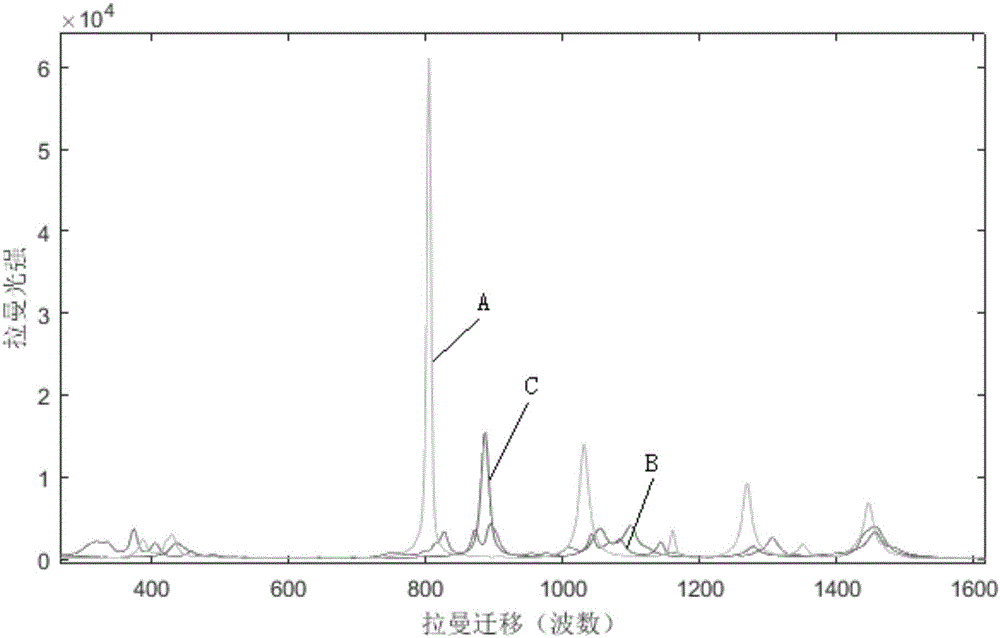Method for directly determining components in multicomponent system adopting raman spectrum
A Raman spectroscopy and system technology, applied in Raman scattering, material analysis by optical means, material analysis, etc., can solve the problems of affecting the authenticity of data, cumbersome operation, low accuracy, etc., to achieve high accuracy, guarantee Authentic, easy-to-use effects
- Summary
- Abstract
- Description
- Claims
- Application Information
AI Technical Summary
Problems solved by technology
Method used
Image
Examples
Embodiment 1
[0036] In the first embodiment, the process of determining the volume percentage of a component cyclohexane in a cyclohexane-n-hexane-ethanol ternary liquid phase system is used to illustrate the method proposed by the present invention.
[0037] A method for directly determining the components of a multi-component system by using Raman spectroscopy, wherein the multi-component system is a ternary liquid phase system of cyclohexane-n-hexane-ethanol, and the component to be quantified is cyclohexane. The method includes the following steps:
[0038] ①In a volumetric flask, prepare a series of homogeneous solutions of a ternary liquid phase system of cyclohexane-n-hexane-ethanol with a known content. N: According to the volume percentage of component A to be quantified, the cyclohexane is in the range of 0-100% Prepare 6 samples of homogeneous solution N within (8.0%, 16.0%, 30.0%, 50.0%, 70.0%, 90.0%), and the remaining component B n-hexane and component C ethanol are formed in rando...
Embodiment 2
[0049] The second embodiment illustrates the method proposed by the present invention by determining the mass percentage of a component n-hexane in a cyclohexane-n-hexane-ethanol ternary liquid phase system.
[0050] A method for directly determining the components of a multi-component system by using Raman spectroscopy, wherein the multi-component system is a ternary liquid phase system of cyclohexane-n-hexane-ethanol, and the component to be quantified is n-hexane. The method includes the following steps:
[0051] ①In a volumetric flask, prepare a series of homogeneous solutions of a ternary liquid phase system of cyclohexane-n-hexane-ethanol with a known content. N: According to the volume percentage of component B to be quantified, the volume percentage of n-hexane is in the range of 0-100% (8.0%, 16.0%, 30.0%, 50.0%, 70.0%, 90.0%) Prepare 6 samples of homogeneous solution N, the remaining component A cyclohexane, component C ethanol in random proportions; further preparation is...
PUM
 Login to View More
Login to View More Abstract
Description
Claims
Application Information
 Login to View More
Login to View More - R&D
- Intellectual Property
- Life Sciences
- Materials
- Tech Scout
- Unparalleled Data Quality
- Higher Quality Content
- 60% Fewer Hallucinations
Browse by: Latest US Patents, China's latest patents, Technical Efficacy Thesaurus, Application Domain, Technology Topic, Popular Technical Reports.
© 2025 PatSnap. All rights reserved.Legal|Privacy policy|Modern Slavery Act Transparency Statement|Sitemap|About US| Contact US: help@patsnap.com



